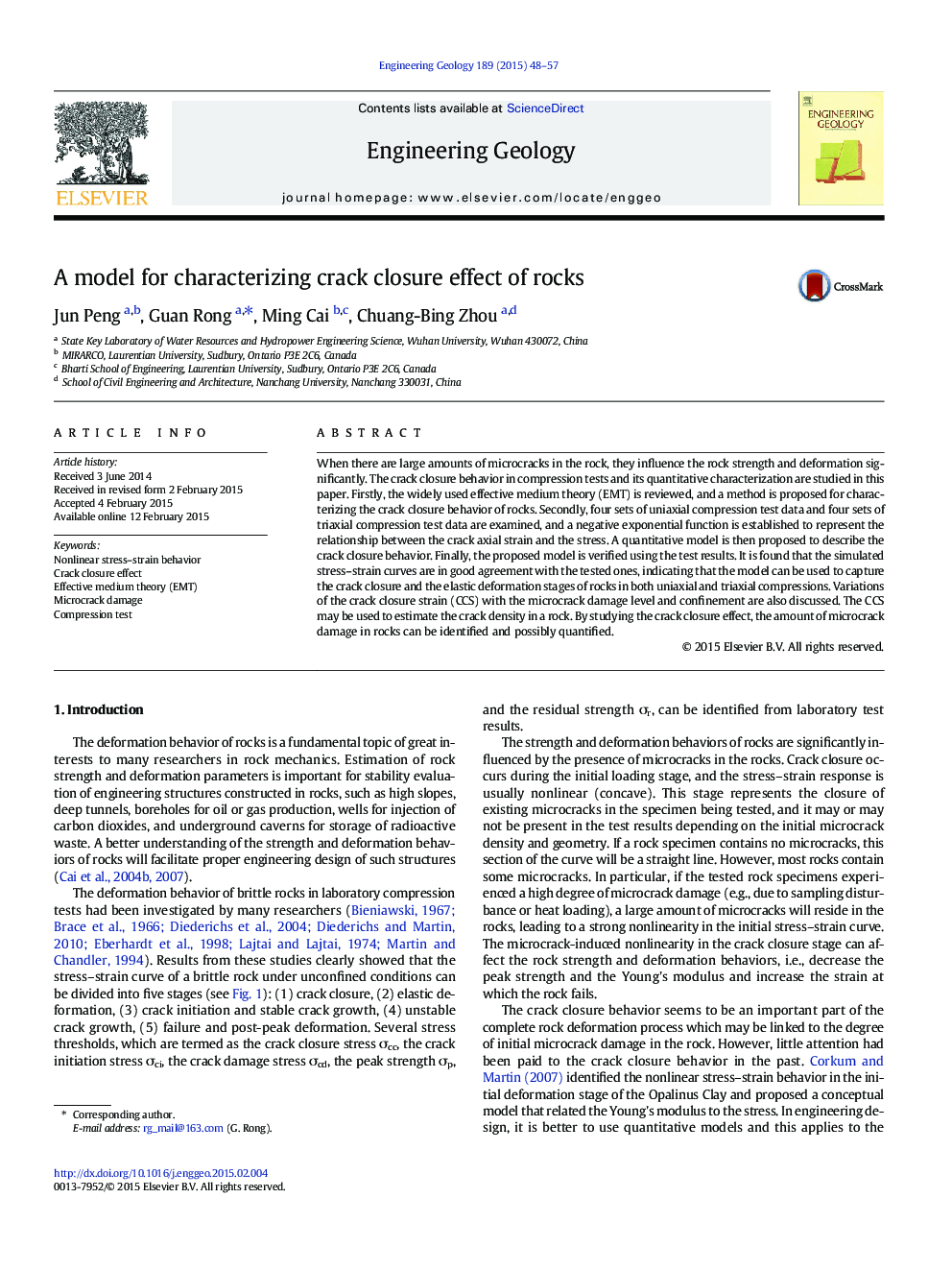| کد مقاله | کد نشریه | سال انتشار | مقاله انگلیسی | نسخه تمام متن |
|---|---|---|---|---|
| 4743316 | 1641796 | 2015 | 10 صفحه PDF | دانلود رایگان |
• A negative exponential function is established to represent the relationship between the crack axial strain and the stress.
• A quantitative model is proposed to describe the crack closure behavior.
• The crack closure strain may be used to estimate the crack density in a rock.
When there are large amounts of microcracks in the rock, they influence the rock strength and deformation significantly. The crack closure behavior in compression tests and its quantitative characterization are studied in this paper. Firstly, the widely used effective medium theory (EMT) is reviewed, and a method is proposed for characterizing the crack closure behavior of rocks. Secondly, four sets of uniaxial compression test data and four sets of triaxial compression test data are examined, and a negative exponential function is established to represent the relationship between the crack axial strain and the stress. A quantitative model is then proposed to describe the crack closure behavior. Finally, the proposed model is verified using the test results. It is found that the simulated stress–strain curves are in good agreement with the tested ones, indicating that the model can be used to capture the crack closure and the elastic deformation stages of rocks in both uniaxial and triaxial compressions. Variations of the crack closure strain (CCS) with the microcrack damage level and confinement are also discussed. The CCS may be used to estimate the crack density in a rock. By studying the crack closure effect, the amount of microcrack damage in rocks can be identified and possibly quantified.
Journal: Engineering Geology - Volume 189, 30 April 2015, Pages 48–57
